Abstract
CP-45,899 is a new, semisynthetic beta-lactamase inhibitor. When tested alone, CP-45,899 displayed only weak antibacterial activity, with the notable exception of its potent action against penicillin-susceptible and -resistant Neisseria gonorrhoeae. A combination of 3.12 microgram of CP-45,899 per ml with 3.12 microgram of ampicillin per ml, tested in broth cultures, inhibited ca. 90% of resistant Staphylococcus and Haemophilus influenzae strains; similar data were obtained in a variety of media. The same combination of CP-45,899 with ampicillin or penicillin G inhibited 90% of Bacteroides fragilis as interpreted from agar dilution minimal inhibitory concentrations. Inhibitory concentrations of CP-45,899-ampicillin were bactericidal against H. influenzae strains and were as bactericidal as nafcillin or cephalothin against S. aureus. Ampicillin-resistant S. aureus, H. influenzae, and B. fragilis strains did not develop resistance to CP-45,899-ampicillin when transferred as many as six passages in the presence of a sublethal concentration of the combination.
Full text
PDF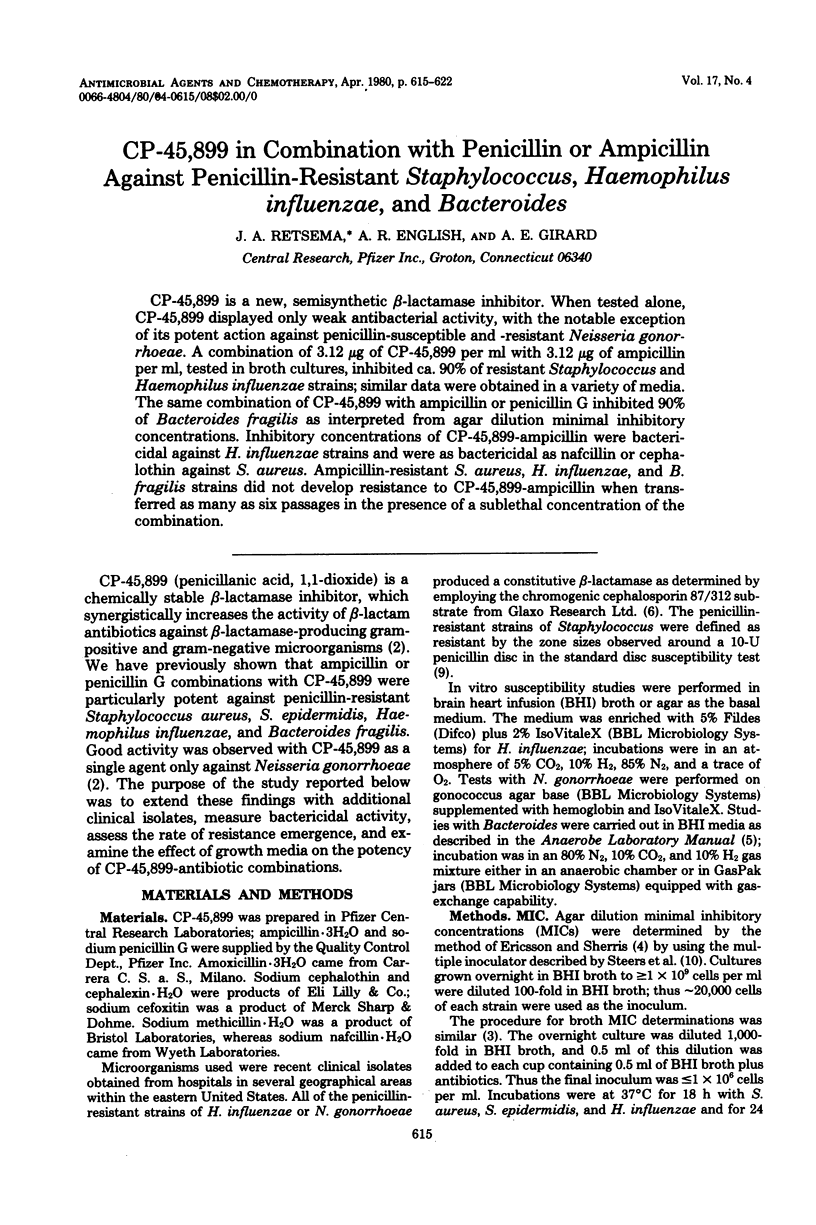

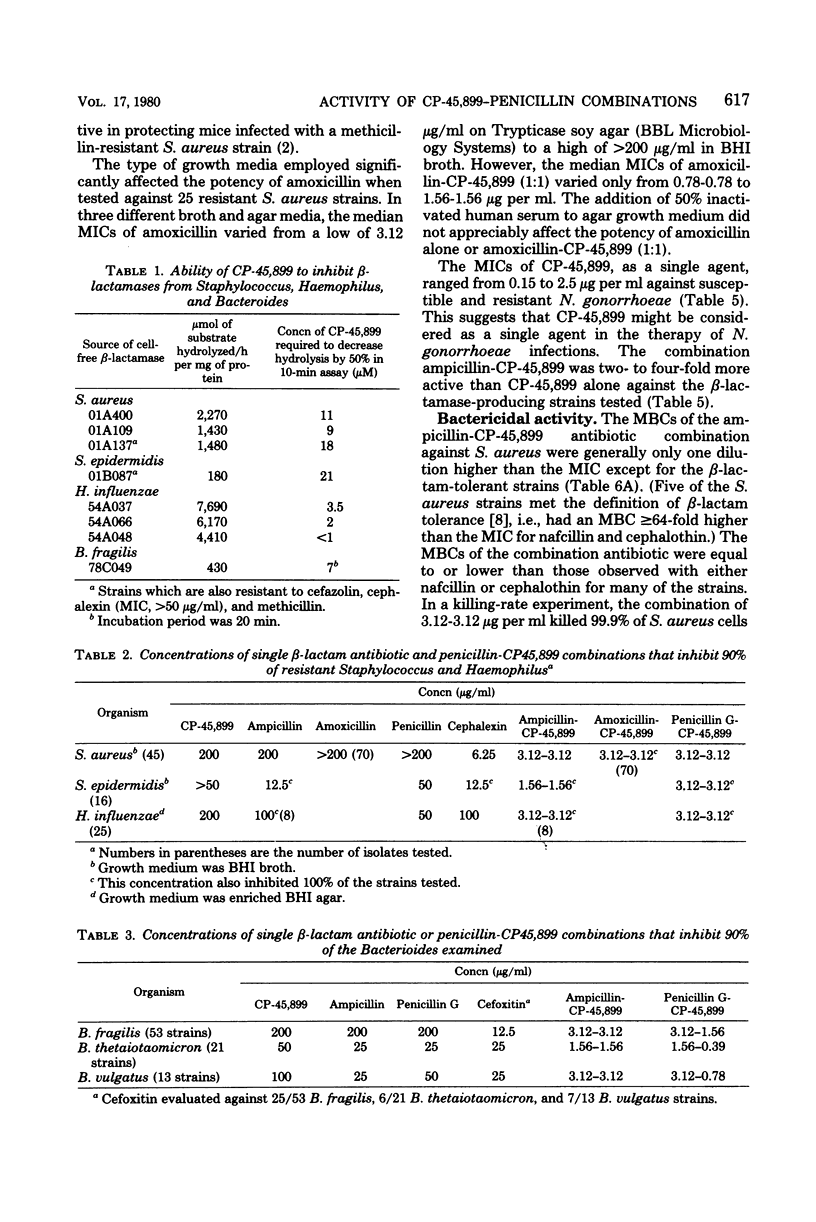
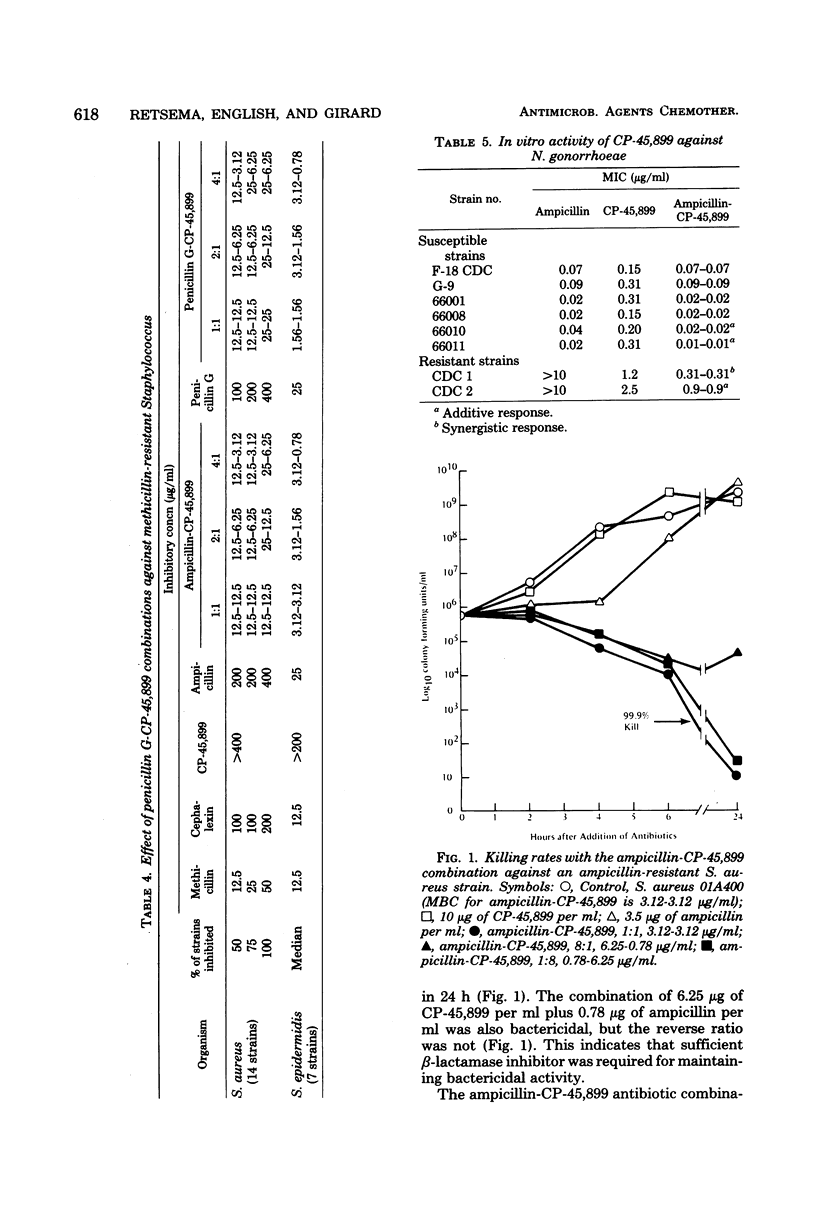
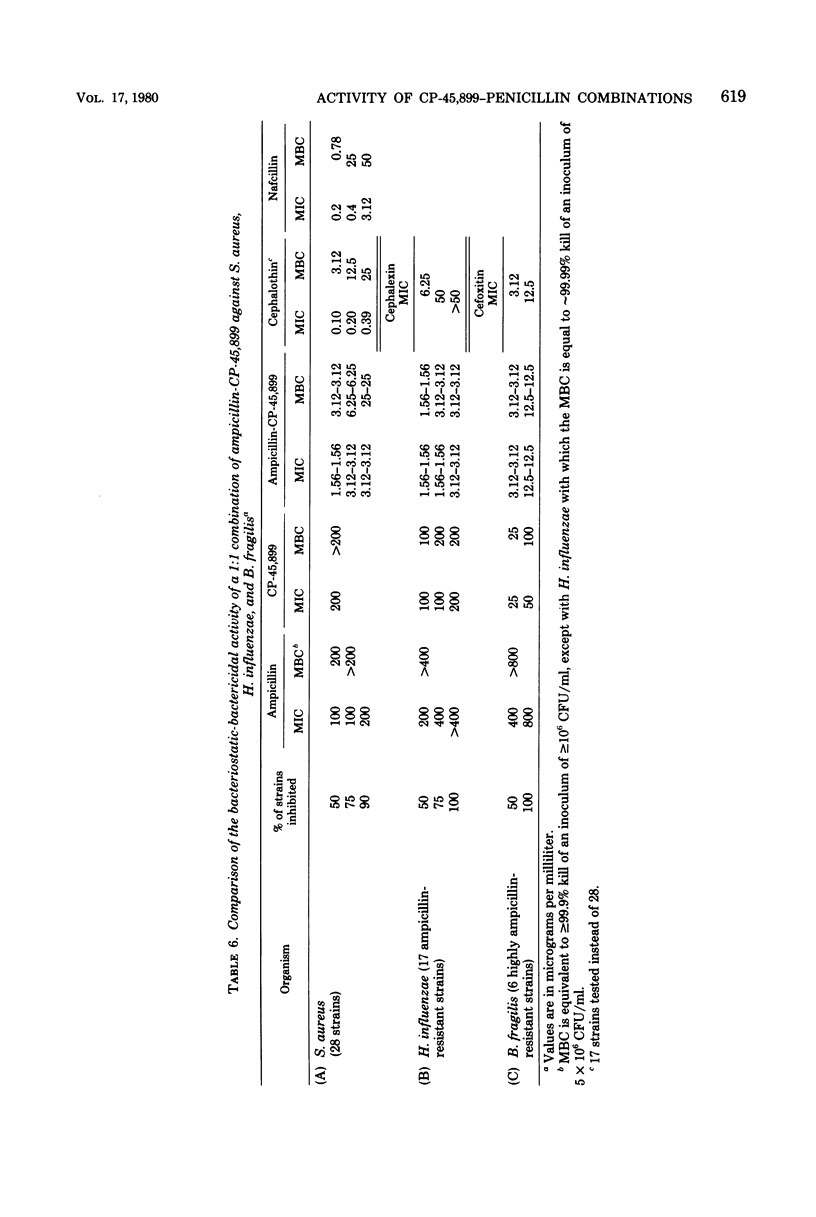
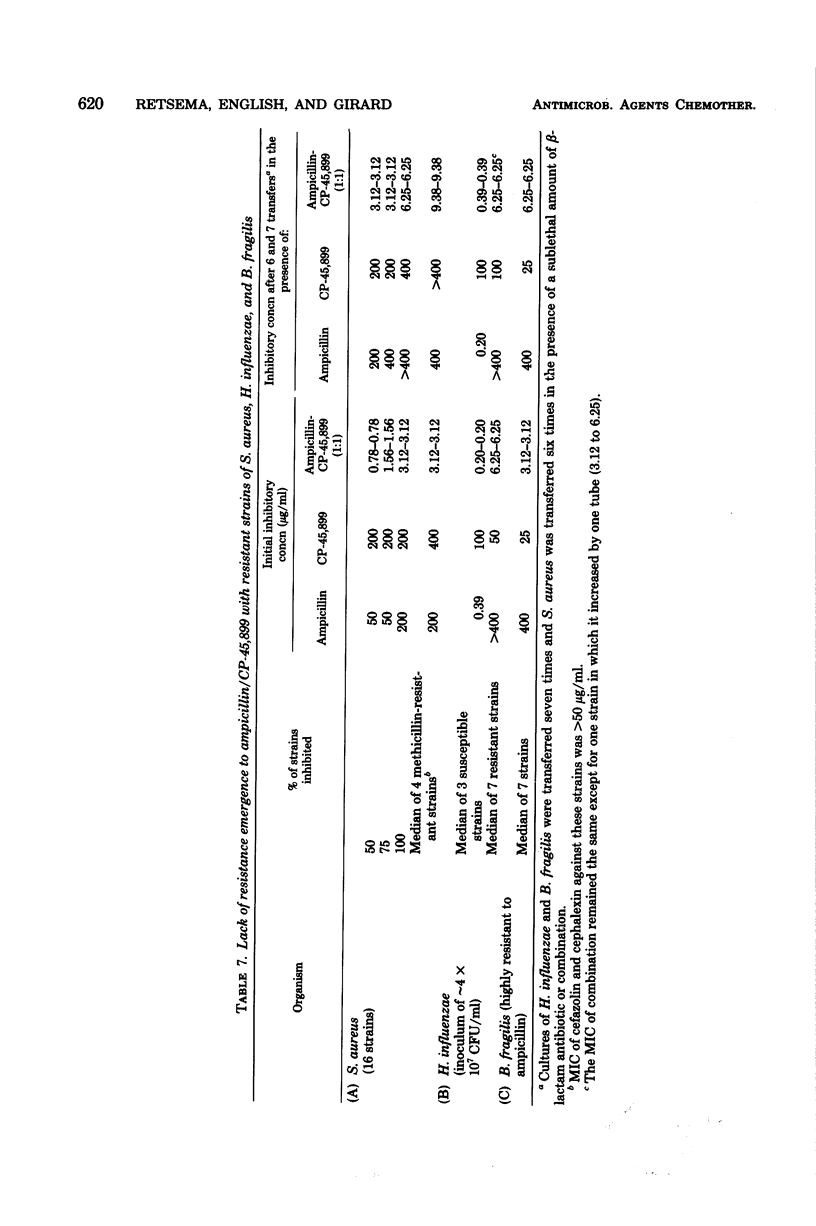
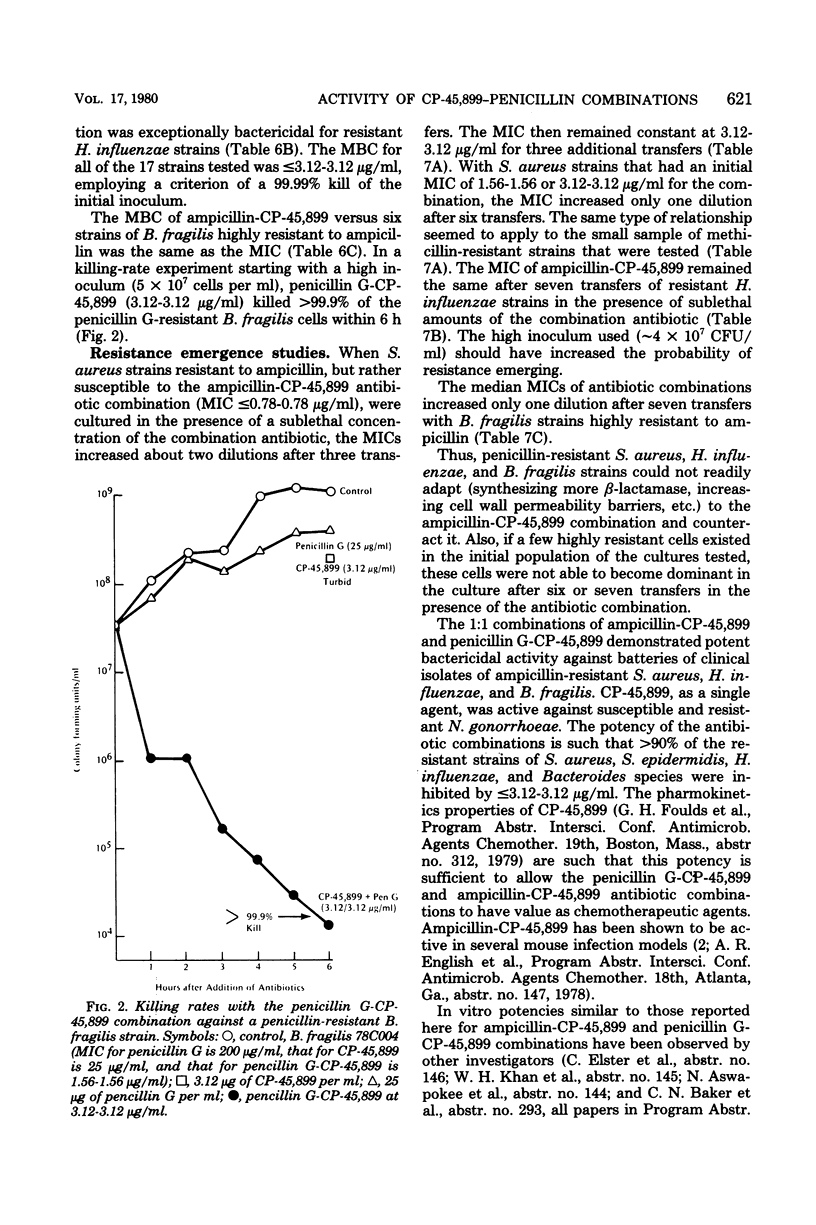

Selected References
These references are in PubMed. This may not be the complete list of references from this article.
- English A. R., Retsema J. A., Girard A. E., Lynch J. E., Barth W. E. CP-45,899, a beta-lactamase inhibitor that extends the antibacterial spectrum of beta-lactams: initial bacteriological characterization. Antimicrob Agents Chemother. 1978 Sep;14(3):414–419. doi: 10.1128/aac.14.3.414. [DOI] [PMC free article] [PubMed] [Google Scholar]
- English A. R., Retsema J. A., Ray V. A., Lynch J. E. Carbenicillin indanyl sodium, an orally active derivative of carbenicillin. Antimicrob Agents Chemother. 1972 Mar;1(3):185–191. doi: 10.1128/aac.1.3.185. [DOI] [PMC free article] [PubMed] [Google Scholar]
- O'Callaghan C. H., Morris A., Kirby S. M., Shingler A. H. Novel method for detection of beta-lactamases by using a chromogenic cephalosporin substrate. Antimicrob Agents Chemother. 1972 Apr;1(4):283–288. doi: 10.1128/aac.1.4.283. [DOI] [PMC free article] [PubMed] [Google Scholar]
- Sabath L. D., Wallace S. J., Gerstein D. A. Suppression of intrinsic resistance to methicillin and other penicillins in Staphylococcus aureus. Antimicrob Agents Chemother. 1972 Nov;2(5):350–355. doi: 10.1128/aac.2.5.350. [DOI] [PMC free article] [PubMed] [Google Scholar]
- Sabath L. D., Wheeler N., Laverdiere M., Blazevic D., Wilkinson B. J. A new type of penicillin resistance of Staphylococcus aureus. Lancet. 1977 Feb 26;1(8009):443–447. doi: 10.1016/s0140-6736(77)91941-9. [DOI] [PubMed] [Google Scholar]
- Zimmermann W., Rosselet A. Function of the outer membrane of Escherichia coli as a permeability barrier to beta-lactam antibiotics. Antimicrob Agents Chemother. 1977 Sep;12(3):368–372. doi: 10.1128/aac.12.3.368. [DOI] [PMC free article] [PubMed] [Google Scholar]


